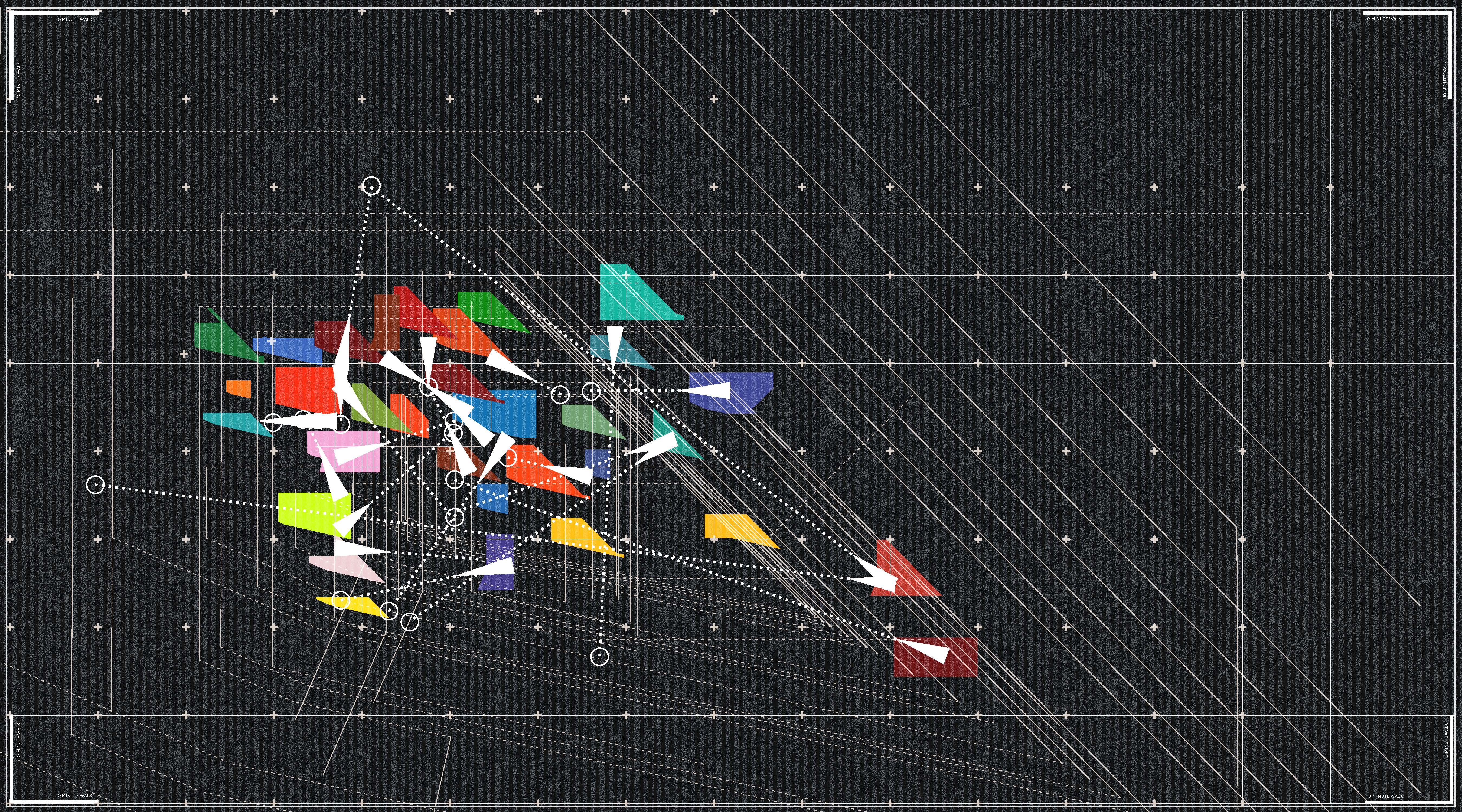Sometimes it’s Good to Say Goodbye
Contributor
Farewells
Architectural practice and representation exist in a state of discursive transition; a flux created by the contradictory beliefs of its ever-diversifying practitioners, technological advancement, ethical concerns and the like. Gone are the days when one way of seeing, drawing and inhabiting the world dominated discourse - with dissension often leading to the most productive, fruitful, and captivating methods of inquiry. In saying farewell to the modes of practice that previously held influence over our profession, we welcome new ways of working, seeing, and existing in the worlds that we create.
There are a great many farewells that are long overdue - but my specific concern lies with mapping; the role it plays in shaping and remembering places, reflecting cultural attitudes, and affecting cultural memory. The map exists as a ubiquitous device through which knowledge is produced and disseminated - and just as architectural production can be molded to produce desired effects – the map can be tailored to produce desired readings of space. In any given map, that which is deemed critical is portrayed while that which is deemed irrelevant is omitted. Unlike that which is mapped, that which is unmapped is assumedly unexplored or uncharted, and carries with it an implicit understanding of its lesser importance, relevance, or value. The infinite combinations of concealed and revealed information in the illustration of a spatial network presents the map as a vehicle through which reality is both captured and created. Through this process the spatial network of the map (originally devised to communicate certain information) becomes a knowledge-making device with a variety of interpretations and readings. Maps not only have meaning, but they also produce meaning. Their epistemological qualities demand an entangled understanding of the networks they seek to represent, and the illustration of this entanglement is paramount to the explication of human nature, place identity, social behaviors and more; presenting a more holistic lens through which society and places can be analyzed. We exist in a time where the technology and tools for mapping have never been more advanced. So why is it that maps are more monotonous than ever?
The conventions of contemporary maps are mostly rooted in the imperialist colonialist mindset, which situates maps and map-making as a capitalist device through which land and resources can be located and ordered, extracted and exploited, divided up into property and sold to the highest bidder. This property-world state of mind - rooted in the proliferation of the cadastral mark - saves no space for the qualitative characteristics of space and often neglects the most prominent features of the places they seek to represent. It also connotes an idea about jurisdiction and power, establishing the cartographer as the de facto authority on the representational preservation of place. These practices have been successful in propagating the capitalist agenda and reading of space, but they are deeply flawed in their assumptions, practices and productions.
What if mapping was an act of collective engagement - one that sought to maximize authorship and participation rather than reduce it to one official source? What if maps ignored the removed assumptions of the city, state and nation, concerning itself more with the inhabitants of the area concerned. What can the map tell us about place, space and community, when it relinquishes subscription to imperialist points of view? Maps which diverge from the norm are sure to embrace abstract and alternative understandings of place, but this abstraction is no different than the extreme artifice of cartographic representation today, which nullifies the vibrancy of place through relentless and methodical process of erasure and reduction. In saying farewell to the hackneyed conventions of the past, mapping can seek to construct the extents of a place beyond the physical, capturing the atmospheric, experiential, and non-visual to produce an otherwise mode of coming into knowledge. By foregrounding the sticky web of interdependencies rooted in and produced by proximity and planning, over the typical cartographic motives of domination, sovereignty and order, maps can produce an otherwise mode of coming into knowledge that speaks to what is seen, but also what is hidden. These counter geographies can help us better understand the qualities of place through collective lived experience, and help us say goodbye to sinister histories and forms of practice which are individualistic, isolated and egotistical. It is no small feat to scrutinize and supplant a familiar form of representation with many practical applications, but when so much is at stake, sometimes it’s good to say goodbye.

This map of Bedford-Stuyvesant from [ AN ] OTHER ATLAS depicts inhabitants’ notions of the neighborhood’s boundary in conjunction with their home base and conception of Bed-Stuy’s center. The multitude of boundary shapes and vectors illustrate the complex perception of place held by its residents.